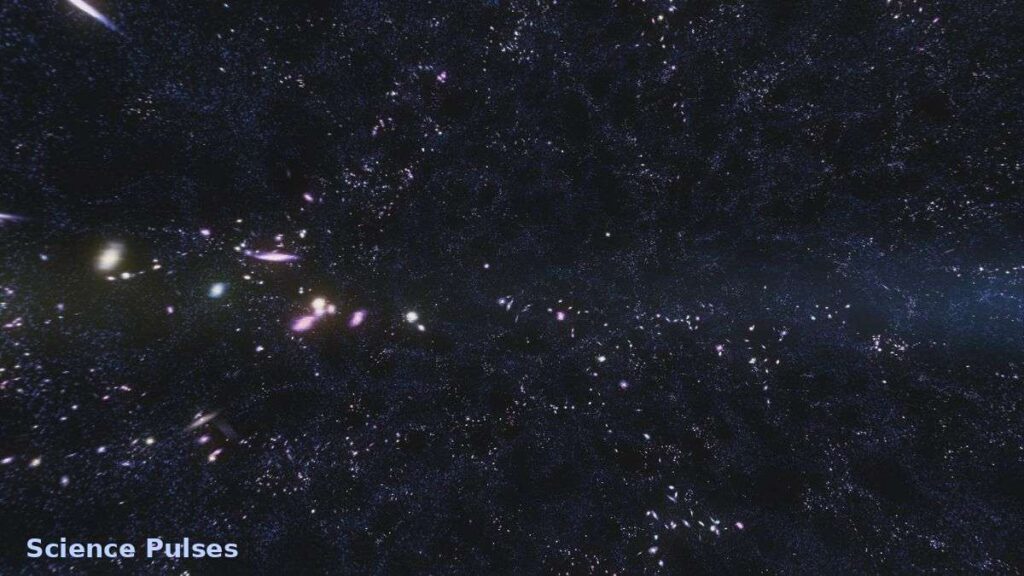Dark Matter Discovery 2025 is emerging as a front-runner in modern astrophysics. For nearly a century, dark matter—believed to compose ~27% of the universe—remained elusive. In 2025, CERN’s NA64 and ATLAS experiments reported their most compelling hints yet of dark-sector particles, such as dark photons interacting with visible matter. Though preliminary, these findings represent the best evidence to date of dark matter signals at the LHC.
Simultaneously, scientists are exploring a cutting-edge method involving thorium-229 nuclear clocks—devices so precise they could detect forces trillions of times weaker than gravity. While the clock is still under development, recent theoretical and experimental breakthroughs suggest it may one day revolutionize the search for dark matter

Similar cosmic anomalies were once wrongly interpreted, like the parallel universe claim involving NASA’s ANITA experiment, showing how cautious scientists must be.
✨ What Is Dark Matter and the 2025 Search for It?
Dark matter is a class of matter that neither emits, absorbs, or reflects light, meaning that it is completely transparent. Nevertheless, the gravitational effects of dark matter are indisputable. It acts to hold galaxies together and affects the layout of the universe.
Although it was theorized in the early twentieth century, scientists have never been able to directly detect dark matter – until possibly now. As revolutionary as dark matter discovery 2025 could be breakthroughs like CRISPR gene editing have also redefined scientific frontiers.
Learn more about dark matter on NASA’s official site
🌌 Dark Matter Discovery 2025: CERN’s Breakthrough Explained
In early 2025, physicists at CERN using the NA64 experiment and the Large Hadron Collider (LHC) produced anomalous signals that are apparently incompatible with all known particles. These anomalous signals represent a potential interaction with dark sector particles, which might include dark photons or axion-like particles.
CERN’s official update reports that the signals of energy spikes and missing energy signatures provide the most compelling evidence for non-visible matter published to date. This dark matter discovery 2025 has sparked a resurgence of new experiments to investigate its properties.
Highlights of the discovery:
- Energy deficits that suggest interactions with unknown particles
- Increased frequency of mono-Higgs and missing energy events
- Preliminary signs of long-lived particles in the MATHUSLA experiment
See full research summary on arXiv
📊 What Experiments Are Involved?
To better understand CERN’s role in the dark matter discovery 2025, here’s a quick comparison of the key experiments involved:
| Experiment | Purpose | Role in Discovery |
|---|---|---|
| NA64 | Fixed-target experiment | Searches for dark photons and missing energy signatures |
| ATLAS & CMS | Main LHC detectors | Detect high-energy collisions that could produce dark matter particles |
| FASER | Forward search experiment | Targets light, weakly interacting long-lived particles |
| MATHUSLA | Surface-level detector | Captures exotic long-lived particles escaping main detectors |
In fact, these are the same facilities that would also monitor other cosmic threats like Solar Storms in 2025, showing how crucial CERN’s technologies are to space science.
Explore the ATLAS project in detail
🌐 Why This Discovery Could Rewrite Physics?
Current physics rests on the Standard Model, which explains the behavior of visible matter and forces. However, it doesn’t include dark matter or gravity at the quantum level.
If this dark matter discovery 2025 is confirmed, it could:
- Expand the Standard Model
- Validate theories beyond it, like supersymmetry or string theory
- Lead to new physics laws
As with the unexpected buzz around Zombie Virus 2025, the public reaction to CERN’s claim has ranged from curiosity to skepticism.
💡 Final Thoughts
If this finding stands, it will represent one of the most significant scientific discoveries of the twenty-first century. Unraveling the nature of dark matter might finally answer our long-held questions about the birth, fate, and hidden dimensions of the universe. We can say with confidence that dark matter discovery 2025 is an important milestone in space science.
Follow Science Pulses as we continue to follow this historic journey into the invisible fabric of the cosmos.




